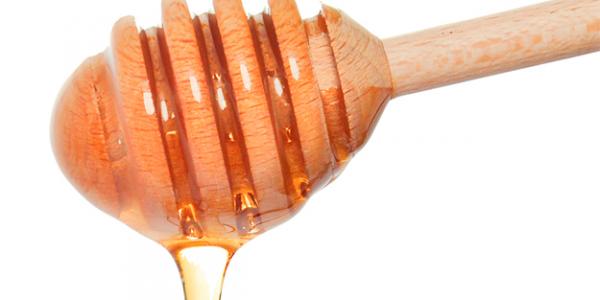
Causes And Treatment For Leg Ulcers
Leg ulcers are open sores on the foot that looks like red craters on skin. Ulcers are breaks in the skin which fail to heal by themselves and may be accompanied by inflammation. A leg ulcer can be shallow and only break through the surface of the skin or it can be very deep, extending through the full thickness of skin exposing tendons and bones. Leg ulcers are located mostly on the side of the foot or on the top or tip of the toe.
If leg ulcers are not treated quickly, they can get infected with serious consequences. Leg ulcers can develop into an abscess and spread through skin and into the bone. This can lead to gangrene or the death of the tissue.
What causes leg ulcers?
Some of the common causes for leg ulcers include:
Circulatory problems – vascular diseases including stroke, heart attack and angina can result in poor circulation in the whole body. When the flow of blood to the feet is greatly reduced, the cells are deprived of oxygen and vital nutrients. This makes the skin more prone to injury and less able to heal itself.
Diabetes – a condition where individuals have high blood sugar levels. In diabetics, the cells either do not produce sufficient insulin or their response to insulin is greatly diminished resulting in higher sugar levels. Sugar destroys protein structures within our bodies including nerves and when accompanied by poor circulation, the result is often a greater risk for leg ulcers to occur.
Peripheral neuropathy – this is a condition where nerve damage occurs in the legs and feet. Since the nerves are damaged, there is no sensation of pain and hence when one wears tight fitting shoes that rub on skin, this goes undetected and increases the risk of leg and foot ulcers.
Abnormality to the structure of the foot – any alteration to the normal anatomy of the foot can result in leg ulcers. Arthritis, fractures and bone deformities are all contributory factors.
Treating Leg Ulcers
Conventionally, leg ulcers treatments usually involve your GP cutting out the diseased tissue and any callused skin. A simple non-sticky dressing is used and needs to be changed once a week. In some cases, this dressing may have an antibiotic impregnated into the dressing in case the leg ulcer is infected. This form of leg ulcer treatment relies on keeping the wound clean but does not accelerate healing time. For people with good circulation, the healing of the ulcer can take approximately 12 weeks, whilst it may take longer for those with poorer circulation.
Honey has been used as a wound dressing for hundreds of years but recently it has been of scientific interest because of its antiseptic properties. Whilst Manuka honey is often recommended for treating leg ulcers and with good reason as it markedly improves leg ulcer healing.
Honey dressings for leg ulcers have been found to effectively aid wound healing. I tend to recommend Comvita Medihoney Antibacterial Wound Gel. This topical with medical grade Manuka honey has a very high antiseptic rating and is ideal for honey for leg ulcers, healing wounds, sores, venous ulcers, sunburn as well as cuts and grazes. You can use this Manuka honey directly onto the ulcer and cover with a plain dressing.
Before applying the honey wound gel, a fine mist of Clinisept+ Podiatry will cleanse the ulcer, calm down inflammation, deodorise the area and further promote the healing of damaged tissue.
How Zinc Helps Heal Wounds
Zinc helps to heal wounds quickly which is why it is often used in topical creams such as those for treating haemorrhoids and nappy rash. Chronic vein problems causes progressive inflammatory reactions in your body which results in damage to the veins, capillaries and to the skin in the area. This damage also results in lower oxygen levels within the leg tissues which translates to poor wound healing and increased risks for leg ulcer formation.
One of zinc’s roles is to maintain skin health with small studies implicating zinc deficiency with leg ulcers and poor healing of wounds. Whilst zinc is found in a wide variety of foods, it is best to take a zinc supplement to help repair the damaged tissues quickly. Terranova Zinc Complex provides zinc glycinate which is a form of zinc bonded to an amino acid for greater utilisation in comparison to other forms of zinc. This zinc supplement should help to speed up wound healing and also enhance white blood cell activity which may be of benefit in preventing infection within the ulcers.
Leg ulcers are notoriously difficult to treat and often conventional antibacterial dressings and compression bandages are insufficient to completely heal the wound. The use of zinc alongside honey for leg ulcers may speed up the healing of these wounds.
DISCLAIMER: The views, opinions and information expressed in this article and on Victoriahealth.com Ltd are those of the author(s) in an editorial context. Victoriahealth.com Ltd cannot be held responsible for any errors or for any consequences arising from the use of the information contained in this editorial or anywhere else on the site. Every effort is made by the editorial and content team to see that no inaccurate or misleading information, opinion or statement appear, nor replace or constitute endorsement from medical bodies or trials unless specified. Victoriahealth.com Ltd accept no liability for the consequences of any inaccurate or misleading data, information, opinion or statement. Information on Victoriahealth.com Ltd and in the editorials is provided for informational purposes only and is not intended as a substitute for the advice provided by your physician or other healthcare professional. You should not use the information on this website or in the editorials for diagnosing or treating a health concern or disease, or for the replacement of prescription medication or other treatment.